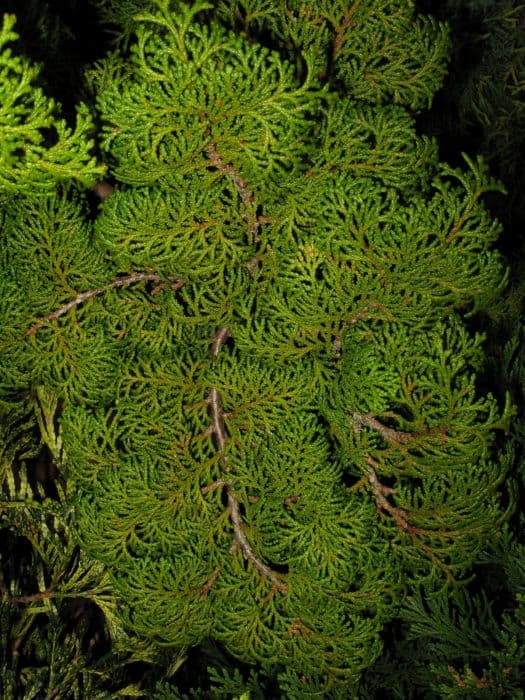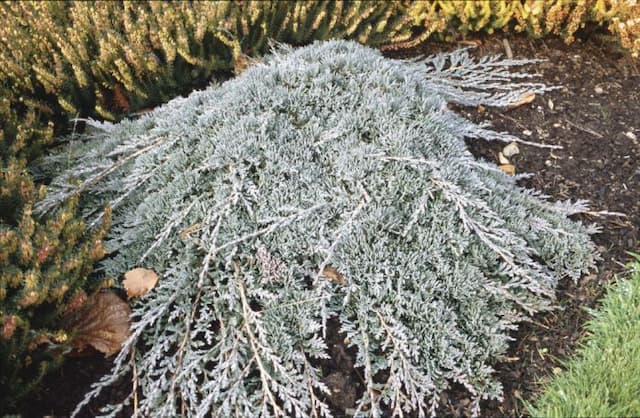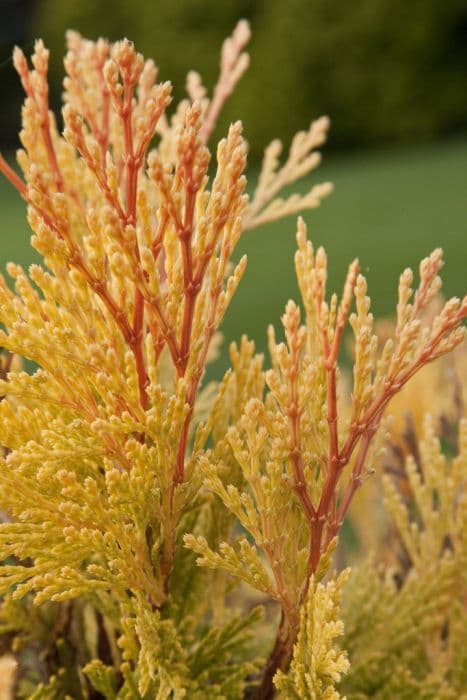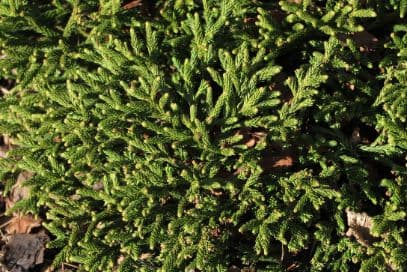Golden Oriental Arborvitae Platycladus orientalis 'Aurea Nana'
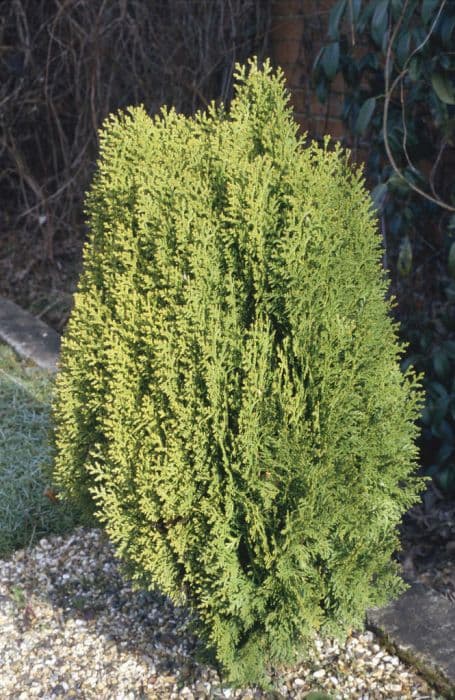

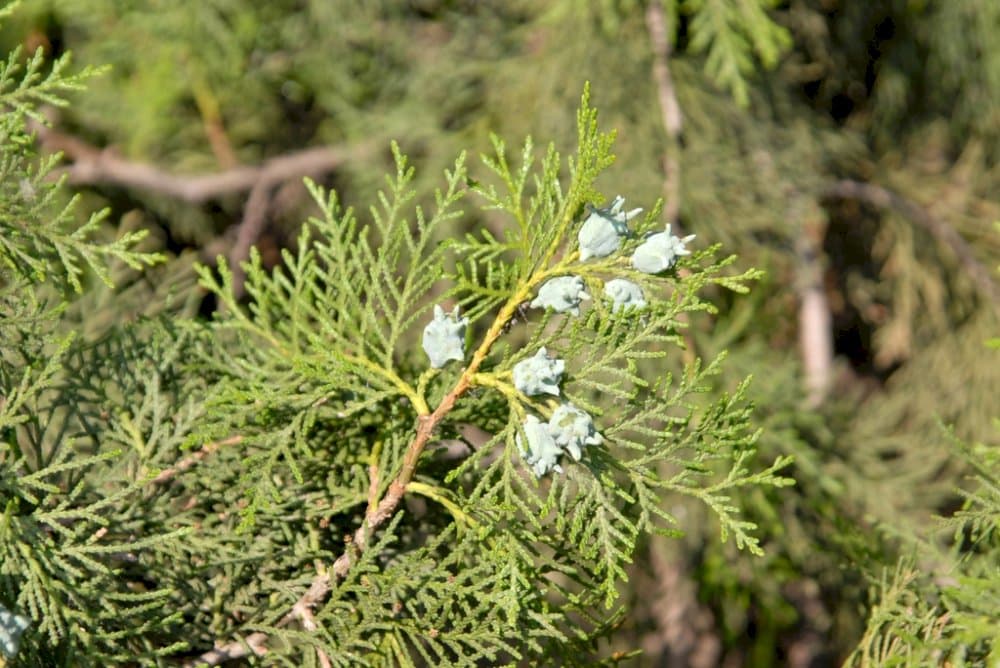

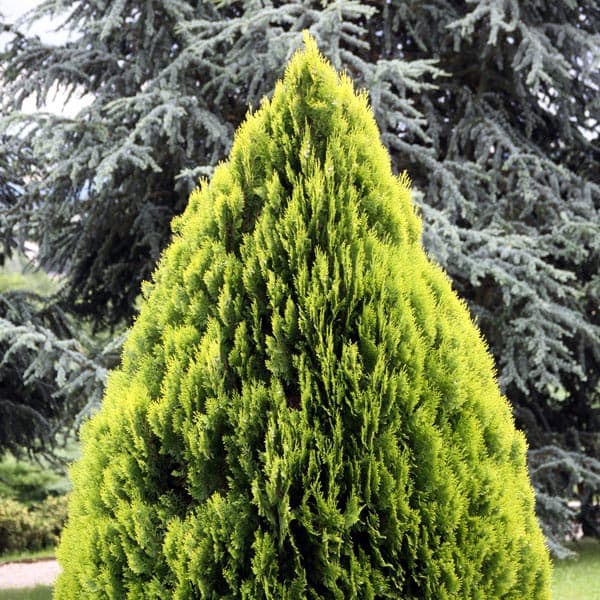
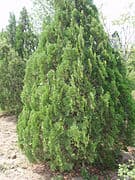
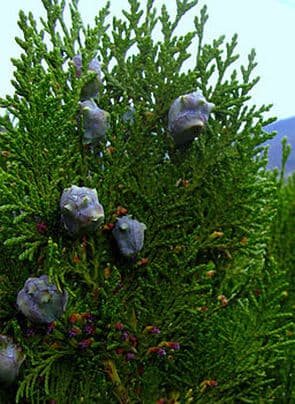
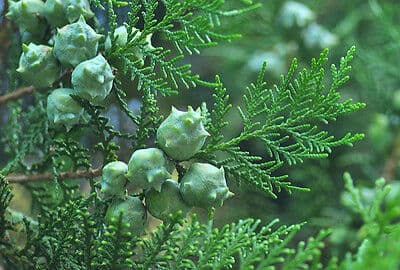
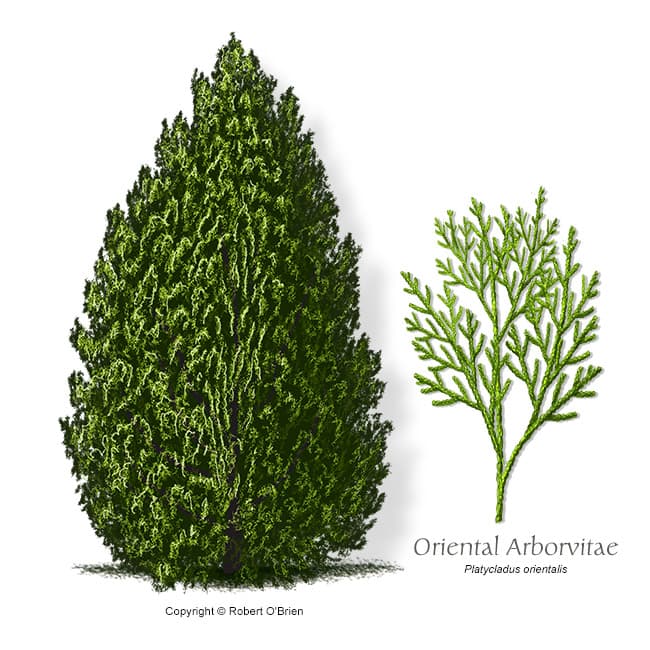
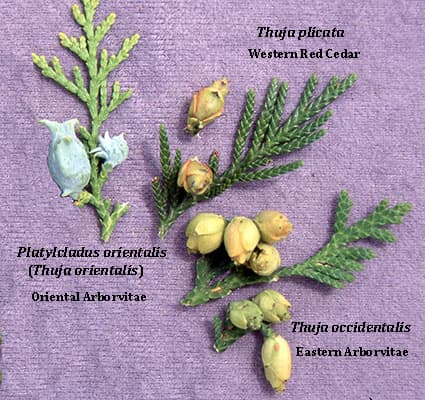
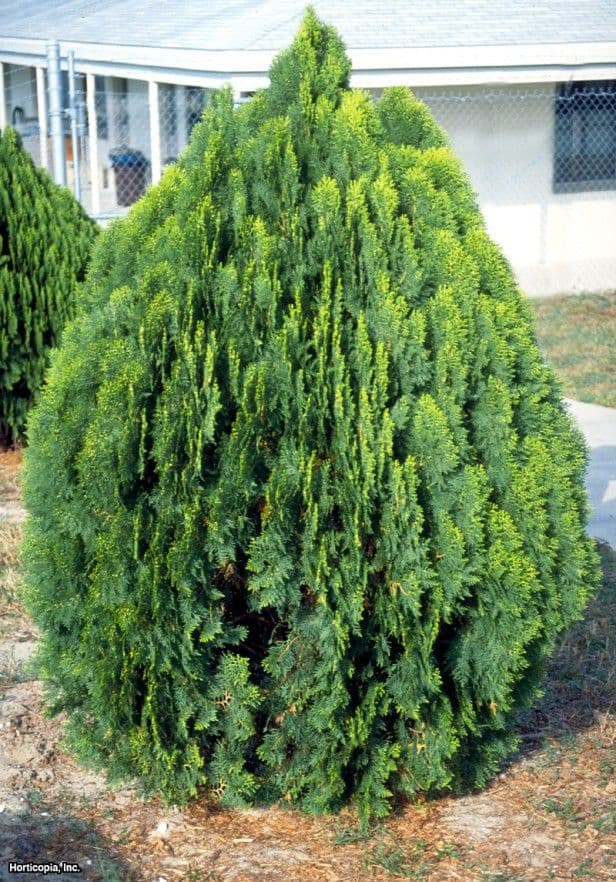
ABOUT
The Platycladus orientalis 'Aurea Nana', commonly known as the "Golden Oriental Arborvitae," is a dwarf evergreen conifer that exhibits a compact, rounded shape. It is distinguished by its dense foliage that has a fine, soft texture. The leaves are scale-like, and unlike some other species, they are arranged in vertical sprays, giving the plant a somewhat flattened look. The color of the foliage is what gives this cultivar its name, 'Aurea,' denoting the golden hue. The leaves exhibit a bright golden-yellow color at the tips, which contrasts beautifully against the deeper green foliage closer to the center. During the winter, the plant may turn a slightly bronze color, which adds to its year-round interest in the garden. It does not produce conspicuous flowers, but rather small cones that are not particularly ornamental. Its overall appearance is neat and tidy, making it a favored choice for gardeners who seek a low-maintenance plant that provides elegant color with a graceful texture. The Golden Oriental Arborvitae fits well in a variety of landscape settings, such as foundation plantings, rock gardens, or as a specimen plant, thanks to its unique coloring and shape.
About this plant
 Names
NamesFamily
Cupressaceae
Synonyms
Golden Oriental Arborvitae, Dwarf Golden Oriental Thuja, Berckman's Golden Arborvitae, Aurea Nana Oriental Arborvitae
Common names
Biota orientalis 'Aurea Nana', Thuja orientalis 'Aurea Nana', Platycladus orientalis 'Aurea Nana'.
 Toxicity
ToxicityTo humans
The common name for Platycladus orientalis 'Aurea Nana' is Oriental arborvitae. This plant is generally considered non-toxic to humans. There is little evidence to suggest that the Oriental arborvitae poses a significant poisoning risk upon ingestion. However, as with many plants, individual sensitivities and allergic reactions can occur, so it is advised to avoid ingesting any part of the plant.
To pets
Oriental arborvitae is generally considered to have low toxicity for pets such as dogs and cats. There are no well-documented cases of poisoning from the ingestion of this plant by pets. Nevertheless, it is still recommended to prevent pets from eating any part of the Oriental arborvitae since individual animals might have unique sensitivities or reactions to plants that are not widely recognized as toxic.
 Characteristics
CharacteristicsLife cycle
Perennials
Foliage type
Evergreen
Color of leaves
Yellow-green
Height
4-5 feet (1.2-1.5 meters)
Spread
4-5 feet (1.2-1.5 meters)
Plant type
Shrub
Hardiness zones
6
Native area
China
Benefits
 General Benefits
General Benefits- Low Maintenance: The plant requires minimal care, making it easy to cultivate and manage for gardeners of all skill levels.
- Ornamental Appeal: It has a unique, golden-yellow foliage that adds visual interest and color to landscapes throughout the year.
- Drought Tolerance: Once established, this plant can survive with less water, making it suitable for dry climates and water-wise gardens.
- Compact Growth Habit: With a naturally small and rounded shape, it fits well in smaller gardens or as part of a mixed border without requiring much space.
- Evergreen Nature: As an evergreen, it provides year-round greenery, maintaining landscape aesthetics even in winter months.
- Cold Hardy: This plant can withstand cold temperatures, making it suitable for a variety of climates and less susceptible to winter damage.
- Soil Adaptable: It can thrive in various soil types, reducing the need for soil amendments and making site selection easier.
- Wind Resistant: The robust structure makes it resilient against strong winds, ideal for exposed sites or as a protective barrier.
- Urban Tolerant: It can handle urban pollution and restricted growing spaces, which is beneficial for city landscaping and urban gardens.
- Resistant to Pests: It's not prone to serious pest issues, reducing the need for pesticides and simplifying plant care.
 Medical Properties
Medical Properties- This plant is not used for medical purposes.
 Air-purifying Qualities
Air-purifying QualitiesThis plant is not specifically known for air purifying qualities.
 Other Uses
Other Uses- Platycladus orientalis 'Aurea Nana', commonly known as Golden Oriental Arborvitae, can be used as a natural fence or screen due to its dense foliage, providing privacy in gardens and landscapes.
- The wood of Golden Oriental Arborvitae is aromatic and resistant to decay, making it suitable for crafting small decorative objects or for use in woodcarving.
- The compact growth habit of this plant makes it an ideal choice for bonsai cultivation, allowing enthusiasts to train and shape the plant into miniature artistic forms.
- Golden Oriental Arborvitae's unique golden-yellow foliage can be used to create striking contrast when planted amongst other green plants in rock gardens or mixed borders.
- Dried foliage of the Golden Oriental Arborvitae can sometimes be used in potpourris or sachets, providing a pleasant scent to drawers and closets.
- This plant can be used as a natural windbreak in coastal areas, where its tolerance to wind and saline conditions can help protect more sensitive plants.
- Golden Oriental Arborvitae can serve as a natural habitat for wildlife; its dense branches offer shelter and nesting sites for birds.
- The plant can be utilized in topiary art, where its small leaves and slow growth make it a good candidate for shaping into formal figures and designs.
- It's often used in themed gardens such as oriental or zen gardens for its structured form and potential to contribute to a serene ambiance.
- During festive seasons, small specimens of Golden Oriental Arborvitae can be potted and decorated similarly to Christmas trees for ornamental purposes.
Interesting Facts
 Feng Shui
Feng ShuiThe Oriental Arborvitae is not used in Feng Shui practice.
 Zodiac Sign Compitability
Zodiac Sign CompitabilityThe Oriental Arborvitae is not used in astrology practice.
 Plant Symbolism
Plant Symbolism- Longevity: Platycladus orientalis 'Aurea Nana', commonly known as the Oriental Arborvitae, symbolizes long life due to the species' ability to live for many years.
- Protection: The dense foliage of the Oriental Arborvitae is often associated with privacy and protection, making it a symbol of shelter and security.
- Resilience: This plant can withstand harsh conditions, making it a symbol of resilience and the ability to endure challenges.
- Peace: Its evergreen nature and role in traditional oriental gardens often associates the Oriental Arborvitae with tranquility and peace.
- Eternity: As an evergreen, the Oriental Arborvitae represents everlasting life and eternal aspects of the soul, symbolizing immortality.
 Water
WaterThe Golden Oriental Arborvitae should be watered deeply once a week, providing about 1.5 gallons of water each time during its growing season in spring and summer. During the fall and winter, reduce watering to every two to three weeks, depending on the weather and soil moisture conditions. It's important to avoid overwatering, ensuring the soil has time to dry out between watering sessions. Always check the soil moisture level a few inches down to determine if additional water is needed.
 Light
LightThe Golden Oriental Arborvitae thrives in full sun to partial shade. The best spot for this plant is an area that receives at least 6 hours of direct sunlight a day, but it can also tolerate some light shade, especially in the hotter afternoon hours. Avoid deep shade locations, as this can lead to sparse foliage and a less dense habit.
 Temperature
TemperatureThe Golden Oriental Arborvitae is hardy and can withstand a temperature range from as low as -30°F to as high as 100°F, although its ideal growing temperatures are between 60°F and 80°F. It is well-suited for temperate climates and can handle occasional fluctuations outside of these ranges.
 Pruning
PruningPruning the Golden Oriental Arborvitae is done primarily to shape the plant or to remove any dead or damaged branches. The best time to prune is in late winter or early spring before new growth starts. Prune lightly and selectively to maintain the desired shape and size since heavy pruning can harm the plant. Annual or biennial pruning is usually sufficient.
 Cleaning
CleaningNot needed
 Soil
SoilChinese Arborvitae 'Aurea Nana' prefers a well-draining soil mix with compost and loamy elements, ensuring it retains moisture without becoming soggy. The ideal pH for the soil should range between 6.0 to 7.5, which is slightly acidic to neutral.
 Repotting
RepottingChinese Arborvitae 'Aurea Nana' should be repotted every two to three years to prevent root-bound conditions and to replenish its soil with a fresh nutrient-rich mix.
 Humidity & Misting
Humidity & MistingChinese Arborvitae 'Aurea Nana' is tolerant of a range of humidity levels but thrives best in moderate humidity typical of outdoor environments.
 Suitable locations
Suitable locationsIndoor
Use a bright spot, keep soil moist, not wet.
Outdoor
Full sun to partial shade, protect from strong winds.
Hardiness zone
6-9 USDA
 Life cycle
Life cycleThe life of Platycladus orientalis 'Aurea Nana', commonly known as the Golden Dwarf Oriental Arborvitae, begins with seed germination, which requires a period of stratification to break dormancy. Upon sprouting, the seedling goes through a juvenile phase, during which the plant establishes its root system and begins to develop its characteristic conical shape. As it enters the vegetative stage, the arborvitae experiences rapid growth and the development of dense, scale-like foliage which changes from golden-yellow when young to green as it matures. Reproductive maturity is reached in several years, when the tree starts to produce small, inconspicuous cones that contain the seeds for the next generation. The mature arborvitae can live for many decades, during which it requires minimal maintenance, being drought-tolerant and resistant to most pests and diseases. The plant life ends when it succumbs to environmental stresses, such as extreme weather, or when it reaches the end of its natural lifespan.
 Propogation
PropogationPropogation time
Spring-Early Summer
Platycladus orientalis 'Aurea Nana', commonly known as the Golden Dwarf Oriental Arborvitae, is typically propagated through semi-hardwood cuttings. The optimal time for taking these cuttings is in late summer or early autumn. To propagate, select a healthy branch and cut a 4 to 6-inch (10 to 15 cm) segment, ensuring there are at least two or three sets of leaves. The lower end of the cutting should be dipped in a rooting hormone to encourage root development. Then, the cutting is planted in a well-draining, sterile potting mix, with the lower set of leaves removed to prevent rot. The pot should be kept lightly moist and in a warm environment with indirect light until roots have developed, which can take several weeks to a few months. Using a plastic cover over the pot can help maintain high humidity, which is beneficial for rooting.


